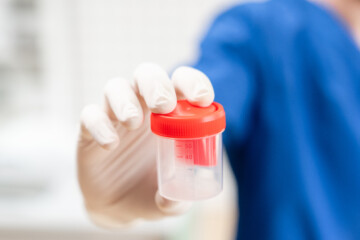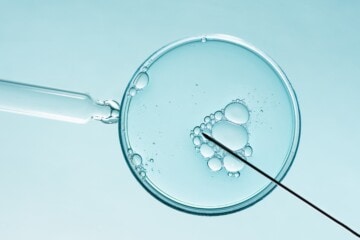Advances in 1.IVF and other Assisted Reproductive Technology are giving more and more couples who struggle with infertility the opportunity to start a family. In the UK there are over 75,000 cycles a year which are overseen by over 100 clinics. Despite the widespread use of IVF it is still a process which is misunderstood by many.
The ‘usual’ IVF timeline
Before we go any further, we want to make it clear that each person’s IVF experience is completely unique. Each couple or individual going through IVF can come across various complications which will provide different challenges depending on their situation. Alongside this, each clinic has its own protocols which can slightly alter the length of each step. This piece is designed to give you an overview of what the two most common protocols are and how long they can take.
1. Preliminary consultation
You will have had a full workup assessing your fertility and perhaps making a diagnosis of the main issue(s). Before the IVF process begins you will likely have a consultation at the clinic. You are likely at this point to get a step-by-step walkthrough of what your treatment will look like and make sure you are fully aware and comfortable with the process.
2. Suppressing hormone production
IVF depends on eggs being retrieved from the ovaries just as they mature. A woman’s eggs develop inside fluid-filled sacs inside the ovaries called follicles. These sacs are stimulated to grow during an IVF cycle. As the follicles grow, increasing oestrogen levels cause a surge of luteinising hormone (LH). This LH surge causes final maturation and release of the eggs. If these eggs are spontaneously released the IVF process comes to a premature end and is wasted. In an IVF cycle, it is important to prevent the LH surge. There are two common methods used to do this: the agonist protocol (aka down regulation) and the antagonist protocol. Both protocols aim to do the same thing – suppress the release of LH to prevent spontaneous ovulation – the release of eggs from the ovaries prior to egg collection.
Before each of these protocols you could be asked by your clinic to go on the pill in order to regulate your cycle.
Both protocols have had similar success rates when analysed in studies.
3. Stimulating egg supply
This is the period where the woman will be required to take daily injections of a fertility hormone called Follicle Stimulating Hormone (FSH), which may also include some LH activity. This stimulation phase is expected to last between 10-12 days. As a result of taking this your ovaries will grow many follicles containing eggs ready for collection at the clinic. The high number of eggs available for fertilisation helps improve the chances of a good quality embryo being produced.
The clinic will keep an eye on your progress throughout your treatment. Bloodwork and scans will help monitor the development of your follicles and let them know when they are approaching the stage of collection.
Down regulation
Also known as the agonist protocol. Agonist injections are given daily, starting about 2 weeks prior to stimulation, when injections of a product containing follicle stimulating hormone (FSH) begin. This will prevent the natural LH surge. The FSH product may or may not also contain some LH activity. The agonist injections continue during the period that the FSH containing products are taken.
Antagonist protocol
This protocol starts with daily injections of an FSH containing product. After 5 or 6 days of stimulation injections you will start extra injections, which can immediately suppress the LH (luteinising hormone) surge. This second medication is administered daily for a short period as decided by your clinic. The antagonist protocol is often preferred when treating those who tend to have a high or possibly, over-response to FSH stimulation, such as women suffering from PCOS.
4. Egg collection
Once the follicles (sacs) containing the eggs have reached the optimal size and your hormones are at an acceptable level your clinic will ask you to administer a final hormone injection at between 34 and 38 hours before the retrieval procedure. This injection is to achieve the final maturation of the eggs in the follicles and effectively mimics the natural LH surge in a normal natural cycle. This ‘trigger shot’ is often given late at night to ensure that egg collection can occur at the scheduled time in the clinic.
For patients on the Agonist or long protocol, the trigger shot is usually something that delivers LH activity, such as hCG.
For patients on the antagonist protocol, often the trigger shot might be a single AGONIST injection, which generates a surge of LH in the woman’s body.
Do not be late for your egg collection! If collection happens closer to 40 hours after the trigger shot, the eggs may all have been released from the ovary and the treatment cycle will have to be abandoned. Egg retrieval is usually carried out using a transvaginal approach under ultrasound guidance. The procedure is carried out under sedation and lasts approximately 30 minutes.
Start your journey with Impryl today
The fertility supplement for both men and women
5. Egg fertilisation and embryo development
The collected eggs will be mixed with either your partner’s or donor sperm in a lab. After 16-20 hours they check to see if they are fertilised. In some cases, these eggs will require a single sperm to be injected into each egg, a process called ICSI (intracytoplasmic sperm injection). The eggs should then be fertilised and become embryos which may develop in the lab for up to 6 days before being transferred. Some clinics may transfer the embryo after 3 days of development, others may continue to the blastocyst stage (up to day 6).
6. Fresh or Frozen embryos?
This may depend on timing or on the clinical situation you find yourself in. There are two different options here: frozen embryo transfer or fresh embryo transfer. While fresh embryo transfer is still more common, we are seeing an increasing number of embryos frozen for a month or longer before being transferred.
In a fresh embryo transfer, the best quality embryo (or possibly two embryos), which had been developing in the lab over the last few days is transferred into the womb through the cervix in a simple procedure. This can be very effective, but if the hormonal balance or the condition of the lining of the womb (uterus) is in question, the clinic may elect to delay transfer until a later cycle, where they will do their best to ensure appropriate development and receptivity of the lining of the uterus.
A frozen embryo transfer is also preferred in patients with a higher risk of over stimulation, or the complication called Ovarian hyperstimulation syndrome (OHSS). It is a fact that symptoms of OHSS may worsen if the patient becomes pregnant during a treatment cycle. Patients at risk of OHSS will often be scheduled for a frozen Embryo Transfer (FET) to allow the ovaries and the lining of the uterus to recover from stimulation and return to normal.
In a frozen embryo transfer the clinic will wait until a future menstrual cycle before attempting to implant the embryo back in the womb. This would usually be a month later but could be several months later depending on your situation. We are seeing an increasing number of frozen embryo transfers recently, as it can help the clinic to create an optimal uterine environment before implanting, particularly in those who are considered high responders to egg stimulation.
7. Progesterone supplementation
All patients having IVF will be given some form of progesterone to support the recently transferred embryo. This is to help the embryo remain implanted and to support it in the early stages. Progesterone will be in the form of a vaginal pessary, tablet, or an injection.
Patients having a frozen embryo transfer usually have even more progesterone support following transfer. This may continue for many weeks depending on whether the embryo has successfully implanted, and a pregnancy is ongoing.
8. The nervous wait
At this point the clinic will have done all they can to give you the best opportunity at getting pregnant. After 2 weeks you will take a blood pregnancy test to find out if you have achieved pregnancy – a quantitative blood test that shows how much human chorionic gonadotropin (hCG) is in your blood. If you are pregnant, your clinic will want to regularly check on the development of the embryo and may ask you to continue with the progesterone and sometimes other medication to help maintain a healthy pregnancy.
Despite advances in technology and understanding, many IVF cycles end in failure. According to the 2. NHS website, between 2014 and 2016 the percentage of IVF treatments that resulted in a live birth was: 29% for women under 35. 23% for women aged 35 to 37. 15% for women aged 38 to 39. Within these results is the inevitable variation in success rates which do vary from clinic to clinic.
If you have a failed IVF cycle it does not mean you are doomed; many people experience success on subsequent cycles.
What will make my IVF cycle take longer?
1. COVID-19
As a result of the pandemic, hospitals are currently being pushed to their limits and therefore it has become more difficult to get IVF treatment when needed. There are still many steps prior to treatment you can take, with a lot of consultations and screenings now taking place virtually.
2. Ovarian response
If your body does not respond as expected to the medication, then the amount of good quality eggs produced can be low or none. On the other hand, some women can be overstimulated by fertility medication and experience OHSS (ovarian hyperstimulation syndrome). If you encounter either of these issues you may have to abandon the current cycle and possibly start your cycle over again.
3. Embryo screening
Embryos can be analysed through genetic testing prior to implantation. This is usually done by some clinics to identify what they consider may be the best quality embryos (most likely to implant).
4. Pre-implantation Genetic Screening (PGS)
Another method may be used when partners are known carriers or are at high risk of passing on a genetic disease. This process is called Pre-implantation Genetic Diagnosis (PGD) and can add weeks on to the process and it can be tough having to wait. However, if successful, it can remove the risk of a serious disease from one’s offspring.
Impryl can help increase your chances of successful IVF
The unique Impryl® formula works by delivering balanced support to your metabolism, essential in the development of healthy egg or sperm cells. This principle has been proven to work, with multiple clinical trials showing that men and women suffering from infertility are more likely to experience success in IVF cycles when supplemented with Impryl.
This is why Impryl is recommended by fertility specialists across the UK. On top of this, you can see stories from those who have bought Impryl before and consider it a key part of a successful pregnancy. We would highly recommend taking Impryl immediately if you are looking to or about to go through IVF, ideally at least 3 months prior to treatment.








